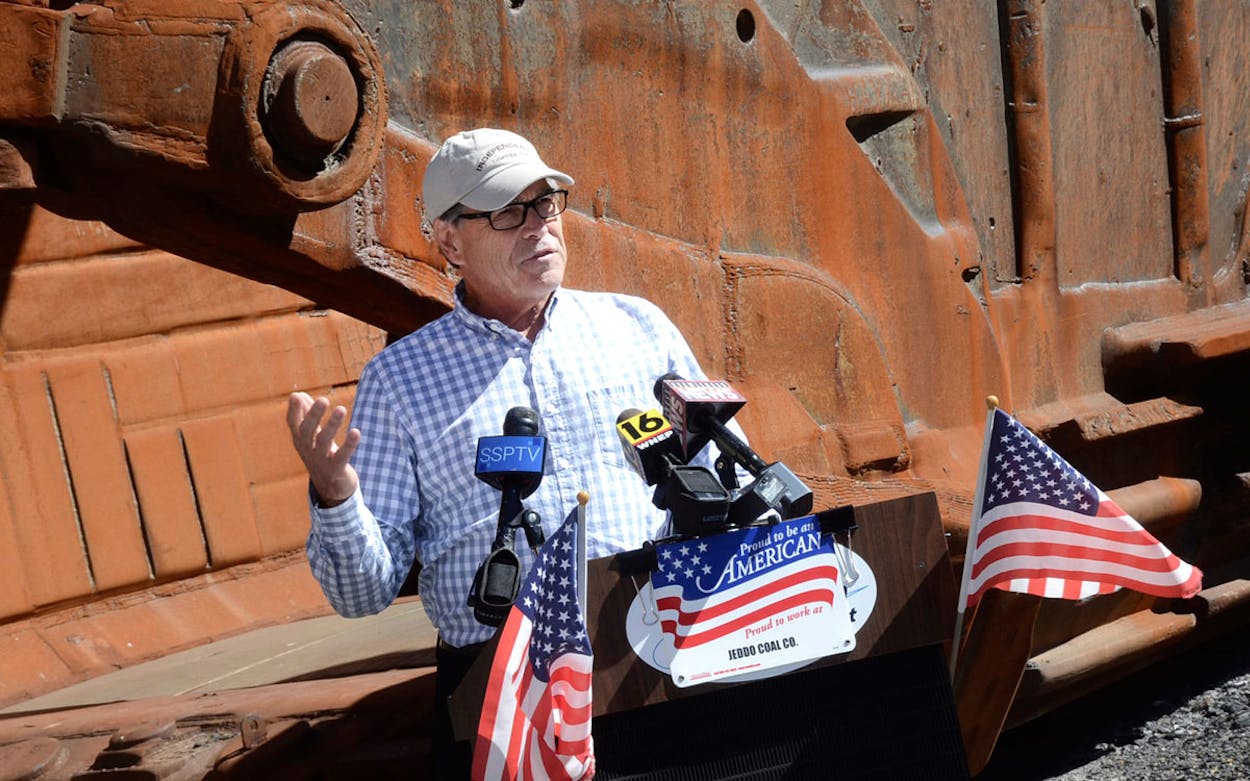Perry’s Plan Pushing Non-Renewables Confounds Experts
The headlines this week have not been kind to Rick Perry’s Department of Energy. Over at Vox, they kept it simple: “Rick Perry’s plan to subsidize coal and nuclear plants is bonkers,” the site explained. At Fast Company, they discussed the practical implications: “The Energy Department Is Making Up Reasons Why You Need To Pay More For Dirty Energy,” the magazine explained. The L.A. Times, by comparison, was downright restrained, merely explaining that “Rick Perry’s plan to subsidize coal and nuclear plants does nothing to fix the U.S. power grid.” What’s this all about? Perry this week, responding to the risks of disasters like Harvey and Irma, proposed a plan to “address threats to grid resiliency” that involved consumers paying to keep economically inefficient traditional power sources like coal plants even as cheaper options exist. As Fast Company explains:
Regional operators of electric grids would have to pay a special rate to keep the plants open, rather than choosing the cheapest electricity source available on the market. In other words, it’s essentially a subsidy, though unlike the clean energy subsidies that Republicans have loudly criticized in the past, it would come directly from consumers paying higher electric bills rather than from the government.
In other words, the Perry Plan involves having utility companies pay coal and nuclear power plants for all of the energy the produce, not just what consumers (whose bills will reflect the added expense to the utilities) are actually using.
Perry unveiled the proposal, but it’s actually not in the DOE’s wheelhouse to turn it into policy. That responsibility lies with the Federal Energy Regulatory Commission (FERC), which has independent authority to determine what happens. And, as Vox notes, it’s unlikely to happen the way that Perry drew it up. According to former FERC commissioner Nora Mead Brownell (who served from 2001 to 2006, under the Bush administration) the site quotes, the proposal is “the antithesis of good economics. It’s going to destroy the markets [and] drive away investment in new, more efficient technologies.” So we’ll watch and see what happens.
Occidental’s Harvey Losses
According to the Midland Reporter-Telegram, the tally is in on what the emergency shutdown of refineries following Hurricane Harvey meant to Occidental Petroleum, and the number is a big one: $70 million in pre-tax revenue as a result of taking offline an ethylene cracker and six other chemical facilities in the Houston area, as well as its oil export terminal in Corpus. A statement from the oil company suggests that, while the impact was significant in the third quarter of 2017, it isn’t something they expect to continue to affect production or profits going forward:
Occidental said it doesn’t expect Hurricane Harvey to have any impact on its fourth quarter earnings. “We remain on track and continue along the pathway to break even at $50 (a barrel oil) after dividend and production growth,” Occidental CEO Vicki Hollub said in a statement.
Texas Oil Imports Reach India
The last time the U.S. was exporting oil to India, Gerald Ford was president of the United States. On Tuesday, though, a Liberian tanker named the MT New Prosperity arrived at the port of Paradip.
The 1.6 million barrels of crude oil on the tanker originated in the Gulf of Mexico, filling up in Freeport as well as in Saint James, Louisiana. And they’re just the first of what appears to be a long-term energy relationship between the U.S. and India moving forward—two Indian oil companies have ordered an additional 2 million barrels of crude, and according to the San Antonio Business Journal, U.S. officials expect the shipments to boost trade between the two nations by up to $2 billion.
“This event represents the growing energy partnership between the U.S. and India, and I look forward to exploring new opportunities to expand the role of reliable, responsible, and efficient energy sources with our allies,” Rick Perry said in a statement.
Valero Signs a Ten-Year Golf Sponsorship Extension
The Valero Texas Open has been held in San Antonio since 1922, and it’s borne the name of the city’s premier oil and gas company since 2002. Valero’s sponsorship of the event was set to end with the 2018 tournament in August, though—until this week, when they inked an extension to keep their name on the competition until at least 2028.
The company’s renewal of its sponsorship comes at a good time for the tournament, too. The past several years, the event took place in the immediate aftermath of the Masters Tournament, when the sport’s top stars were resting after the major tournament; starting in 2019, though, the Valero Texas Open will take place the week before the Masters, providing a good warm-up for golfers looking to prepare for the competition.
That’s good news for the tournament, and good news for San Antonio—the Open raises significant money for charities, with the 2017 edition bringing in $11 million in giving. Tournament director Larson Segerdahl told the San Antonio Express-News that the oil company’s largesse and commitment to the event is a big deal for the city. “For Valero to step up and make this type of commitment is incredible stuff,” he said. “Not only is it good for this tournament, it benefits the community.”








